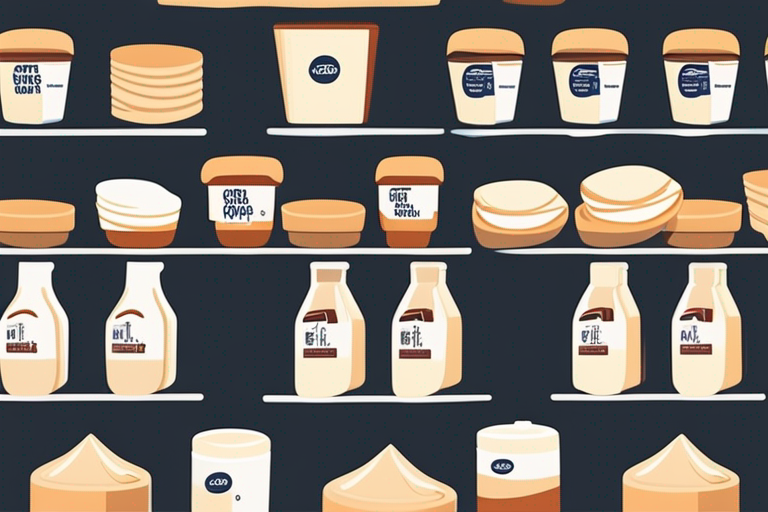
Can Cream Cheese Be Used After the Expiration Date?
Can Cream Cheese Be Used After the Expiration Date?
Cream cheese is a versatile and creamy dairy product that adds richness to both sweet and savory dishes. However, like all perishable foods, cream cheese comes with an expiration date stamped on its packaging. Many people wonder if it's safe to consume cream cheese past its expiration date. In this blog post, we'll explore the factors that determine the safety of using cream cheese after the expiration date and provide practical tips for proper storage and handling.
Understanding Expiration Dates on Cream Cheese
When you purchase cream cheese from the store, you'll notice that it has a sell-by or use-by date printed on the packaging. It's essential to understand the difference between these dates:
- Sell-By Date: This date is a guide for retailers, indicating how long they can display the product for sale. You can still consume cream cheese for some time after the sell-by date if it has been stored properly.
- Use-By Date: This date is the manufacturer's recommendation for when the product should be consumed for the best quality. Consuming cream cheese after the use-by date may affect its taste and texture.
Factors Affecting the Shelf Life of Cream Cheese
Several factors can influence the shelf life of cream cheese, even after the expiration date has passed:
Packaging
- Cream cheese stored in its original packaging is likely to have a longer shelf life compared to cream cheese that has been transferred to another container.
- Ensure the packaging is airtight to prevent bacteria from contaminating the cream cheese.
Storage Conditions
- Temperature: Cream cheese should be stored in the refrigerator at a temperature below 40°F (4°C). Avoid leaving it out at room temperature for an extended period.
- Humidity: Excess moisture can promote the growth of mold on cream cheese. Store it in a dry environment.
- Placement: Keep cream cheese away from foods with strong odors to prevent flavor transfer.
Contamination
- Always use clean utensils to scoop out cream cheese to prevent introducing bacteria.
- Avoid double-dipping to prevent cross-contamination.
Signs of Spoiled Cream Cheese
Before consuming cream cheese past its expiration date, it's crucial to check for signs of spoilage. Discard cream cheese if you notice any of the following:
Visual Indicators
- Mold growth on the surface or inside the package.
- Discoloration, such as yellow or green spots.
- Unusual texture, like sliminess or graininess.
Smell
- Foul or sour odor coming from the cream cheese.
Taste
- Off-flavors or a sour taste.
Tips for Safely Using Cream Cheese After Expiration
If you're considering using cream cheese after the expiration date, follow these tips to ensure safety and quality:
- Inspect the Cream Cheese: Check for any signs of spoilage, as mentioned above, before using it.
- Smell Test: Give the cream cheese a sniff to detect any off odors.
- Taste Test: Take a small amount of cream cheese and taste it to ensure it hasn't soured.
- Use in Cooking: If you're unsure about the cream cheese's freshness, consider using it in cooked dishes where any potential spoilage may be less noticeable.
Conclusion
While it's generally recommended to adhere to expiration dates for optimal food safety, cream cheese can still be used after the expiration date under certain conditions. By understanding the factors that affect cream cheese shelf life, practicing proper storage and handling, and being vigilant for signs of spoilage, you can enjoy cream cheese safely even after the expiration date. Remember, when in doubt, it's best to err on the side of caution and discard any cream cheese that shows signs of spoilage.
Next time you're debating whether to use that slightly expired cream cheese in your fridge, consider these tips to make an informed decision about its safety and quality. Enjoy your creamy creations responsibly!

Authoritative Food Safety References
These agencies and university labs inform every tip and health precaution we publish.
USDA FoodKeeper – Cold Storage Guidelines
Official refrigerator, freezer, and pantry timelines maintained by the U.S. Department of Agriculture.
Visit USDA FoodKeeperFDA Produce Safety Rule & Grower Guidance
Field-to-fridge handling practices that prevent contamination of fruits, vegetables, and leafy greens.
Visit FDA Produce SafetyCDC Foodborne Illness Prevention Hub
Surveillance-backed guidance on pathogens, symptoms, and steps to reduce foodborne illness risk.
Visit CDC Food SafetyUC Davis Postharvest Technology Center
University research detailing optimal storage atmospheres for produce after harvest.
Visit UC Davis PostharvestPenn State Extension – Home Food Preservation & Safety
Peer-reviewed extension bulletins on safe canning, chilling, and reheating practices.
Visit Penn State ExtensionCan cream cheese be used after the expiration date?
How can I tell if cream cheese has gone bad?
Can I freeze cream cheese to extend its shelf life?
How long does cream cheese last in the refrigerator?
Is it safe to eat cream cheese that has been left out at room temperature?
Scan your food directly and get instant safety info using our AI-powered camera feature.